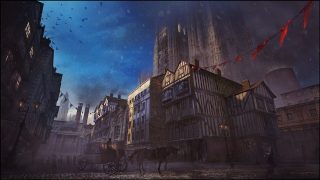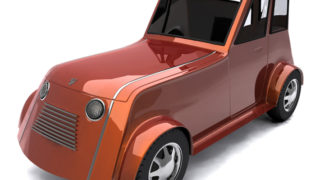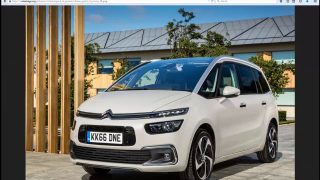
Making of “Taming Of Naas”
This is a painting I did for a book about Dragons, in Europe, coming out soon. It is done in Photoshop 7.
Introduction
Since my personal work has been known to the public mostly in traditional mediums (like oils and acrylics), people are often surprised when I tell them I also work in digital, and that most of my book covers are now done in Photoshop.
The digital media is not new to me. In fact, I started to use it when I was doing concept artwork on “Dinosaur”, in 1996. It took me a while to like it, but when you realize how much control you have on all your parameters, it can become addictive.
In any case, I would never replace a classical training in traditional mediums with an exclusive digital training. Of course, Photoshop or any other digital package makes things easier on a practical level, but the artistic principles to follow are still exactly the same, and mixing real paint teaches you in depth how color works in nature.
STEP 1
Preliminary sketch. This is the concept stage, where I use a mix of imagination and observation of nature to build the structure of my illustration. I do a more refined sketch of the original concept along the way. In that stage, lighting isn’t emphasized, just lines that will define the elements and objects of the scene. Sometimes, I also put black and white lighting in at that point, but in this case, I already have in my mind a pretty good idea of what the lighting will be, so I go directly to color.

STEP 2
This phase is the most critical one of all. I need to determine the exact balance of values and colors that will be the foundation of the painting. This is a block in, so, catching the general mood of the final image is more important than thinking of details. It has to be as accurate as possible to be believable. In some cases, it will need adjustments later on, but these adjustments shouldn’t be too far off this original block in.
I usually turn the sketch layer to multiply in order to keep the sketch visible on top of the painting.

STEP 3
I refined the original block in and started to work on the sky and the far mountain landscape. The balance between cools and warms is very important to give a slightly translucent effect to the clouds. Another important aspect to watch: the clouds need to acquire volume and three-dimensionality without losing their softness. You also have to remember all the reflection issues: the more a cloud is in the shade, the more it’s going to be reflecting a cooler light from the sky, instead of the sun.
Mountains here must show the depth of the background. The furthest ones need to be closer in value to the sky and clouds while the middle range and closer ones must give a sense of solidity, with darker values, without losing their depth and values in relation to the foreground and character.

STEP 4
In this phase, I work on the rock on which the dragon is standing, and I start adding details onto the dragon itself, particularly the head. At that point, it is the proper balance of darks and lights placed on the foreground elements –along with a good balance of warm and cool colors- that is going to build the right volumes against the far background.
A lot of different things can affect the depth of elements in an image (fog, smoke, rain, snow, etc…). But as a general rule, the closer the elements are, the more saturated their colors will be and the greater the contrast between light and shadow.

STEP 5
Now, I finish detailing the dragon, trying to push realism in the skin, the scales, etc…

I separated all elements in the image as individual layers to allow a maximum of flexibility.

STEP 6
In the final image, I am completing the woman floating before the dragon. It is a delicate part, as her dress has to feel soft and slightly transparent.
I add the last touches of realism (like the smoke still coming out of the dragon’s nose) and I make sure that everything is in balance between the landscape and the characters.
At that point, you want to review the whole painting and make sure that all the colors and values are working together harmoniously. If you see some values too dark or colors too saturated in the background that fight with the readability of the character, it’s time to knock them down. Same thing with the values or edges that would be too tame or not descriptive enough. The last look over your painting is about being as critical as you can be on your work. And if an area has been really nicely worked, but in the end comes in the way of readability or clarity of the whole image, simplify it.
Your final image is always about composition, stylization, clarity and balance.
Whether you paint in digital or analog, these principles apply exactly the same way.
The quality of a painting doesn’t depend on what tools you use, but on how you use them.









